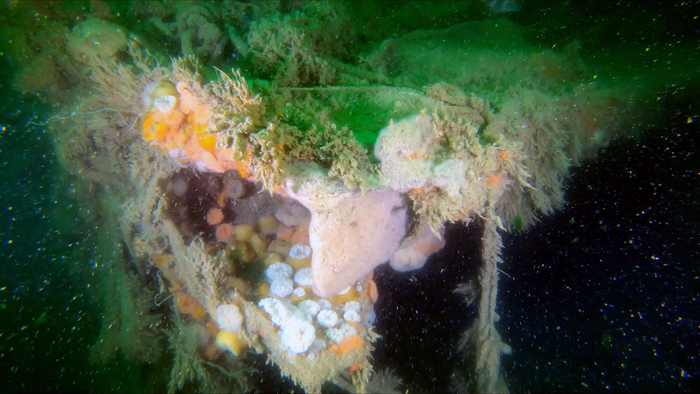Experts say serious damage is being done to the surrounding environment of a WWII shipwreck with hazardous pollutants continuing to leak into the ocean 80 years on.
The V-1302 John Mahn was a repurposed fishing trawler used by the Germans as a patrol boat in the Second World War. It sunk of the Belgian coast in 1942 when it was attacked by the British Royal Air Force.
For 80 years, the shipwreck has laid at the bottom of the ocean, but marine science researchers say that harmful effects can be had on the environment from such vessels.
Petroleum explosives, bombs, heavy metals are some of the materials that can wreak havoc on the ocean’s ecosystem, and it’s believed by PhD candidate Josefin Van Landuyt of Ghent University that there is 2.5m to 20.4 m tons of petroleum products on shipwrecks around the world.
“The general public is often quite interested in shipwrecks because of their historical value, but the potential environmental impact of these wrecks is often overlooked,” he said.
“While wrecks can function as artificial reefs and have tremendous human story-telling value, we should not forget that they can be dangerous, human-made objects which were unintentionally introduced into a natural environment.
“Today, new shipwrecks are removed for this exact reason.”
https://twitter.com/CPP_Officer/status/1582363961949052936
In regard to the V-1302 John Mahn, it was found that the old vessel was having an impact on the microbiome and geochemistry of the surrounding seabed.
Several pollutants including nickel, copper, polycyclic aromatic hydrocarbons found in coal, oil and gasoline plus arsenic and explosive compounds were found to be influencing the microbiome around the ship and surrounding areas.
It’s believed that hull corrosion is adding to the list of environmental hazards from the shipwreck.
“Although we don’t see these old shipwrecks, and many of us don’t know where they are, they can still be polluting our marine ecosystem,” said Van Landuyt.
“In fact, their advancing age might increase the environmental risk due to corrosion, which is opening up previously enclosed spaces. As such their environmental impact is still evolving.
Scientists say that to get a better understanding of the impacts, more shipwrecks in the North Sea need to be sampled and studied.






